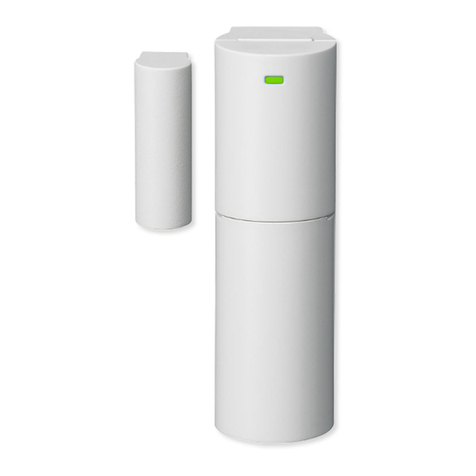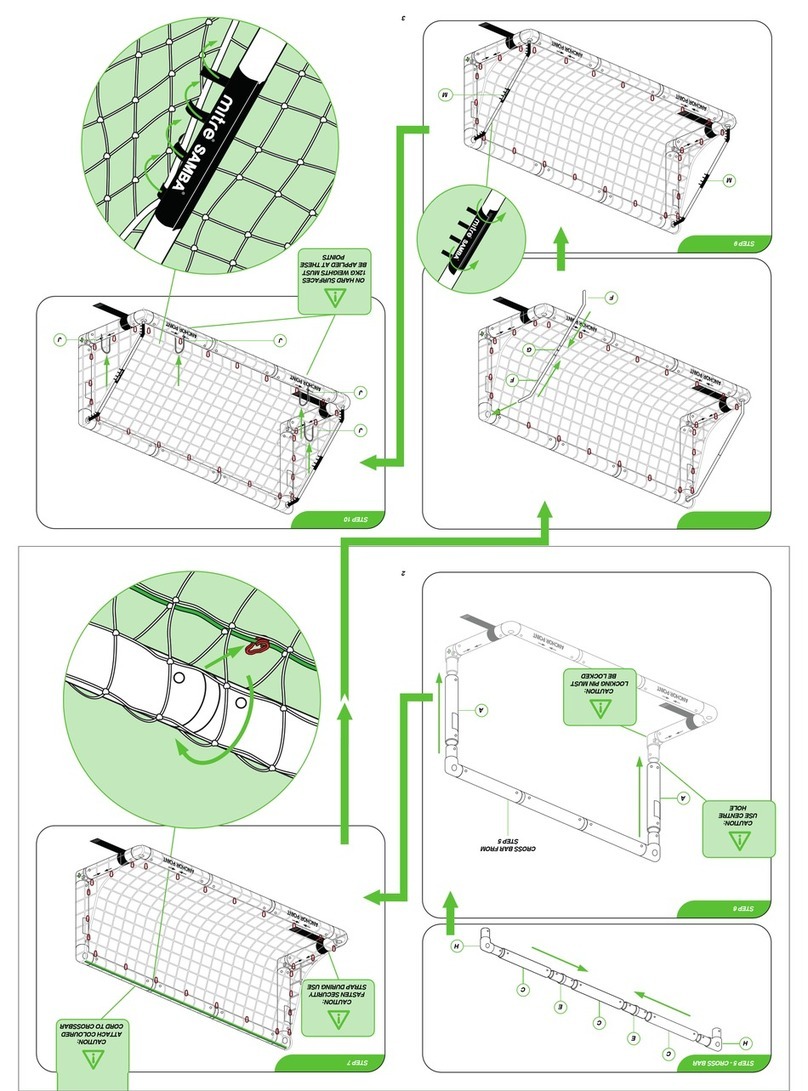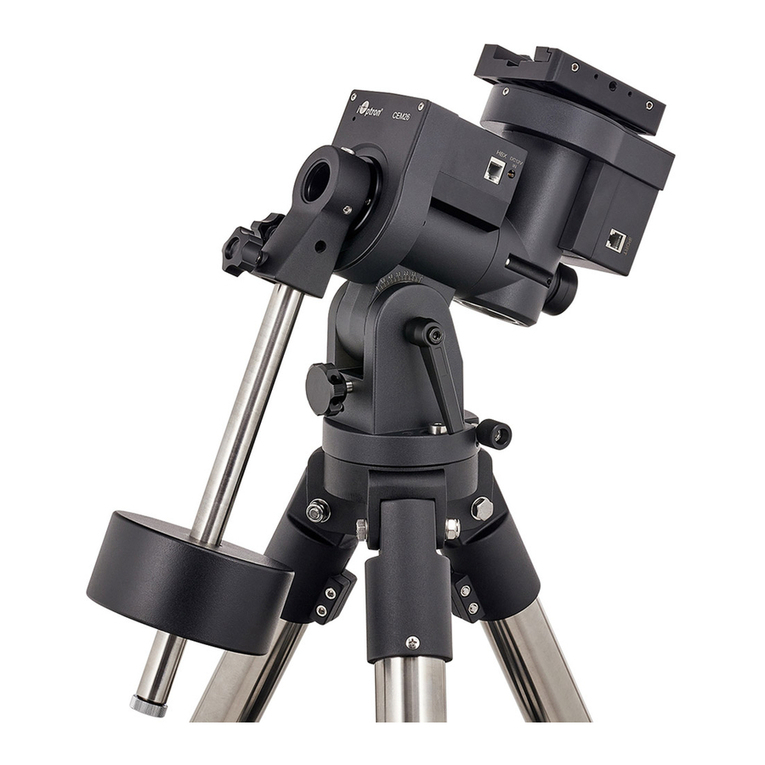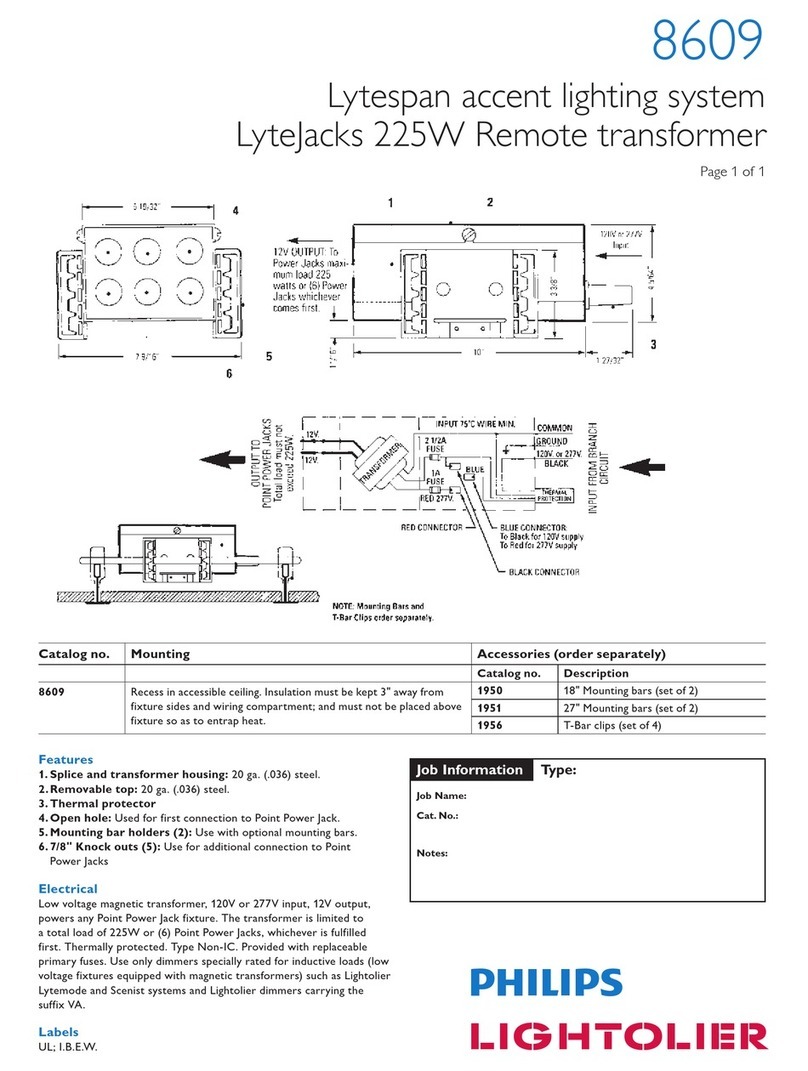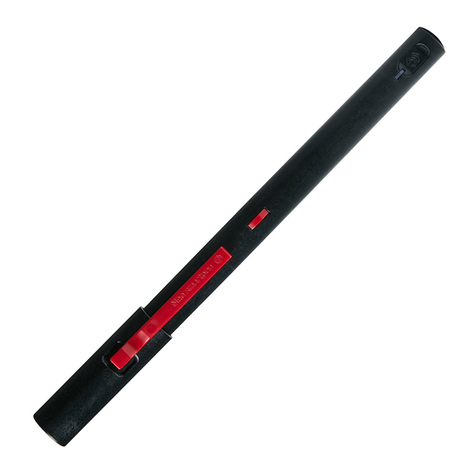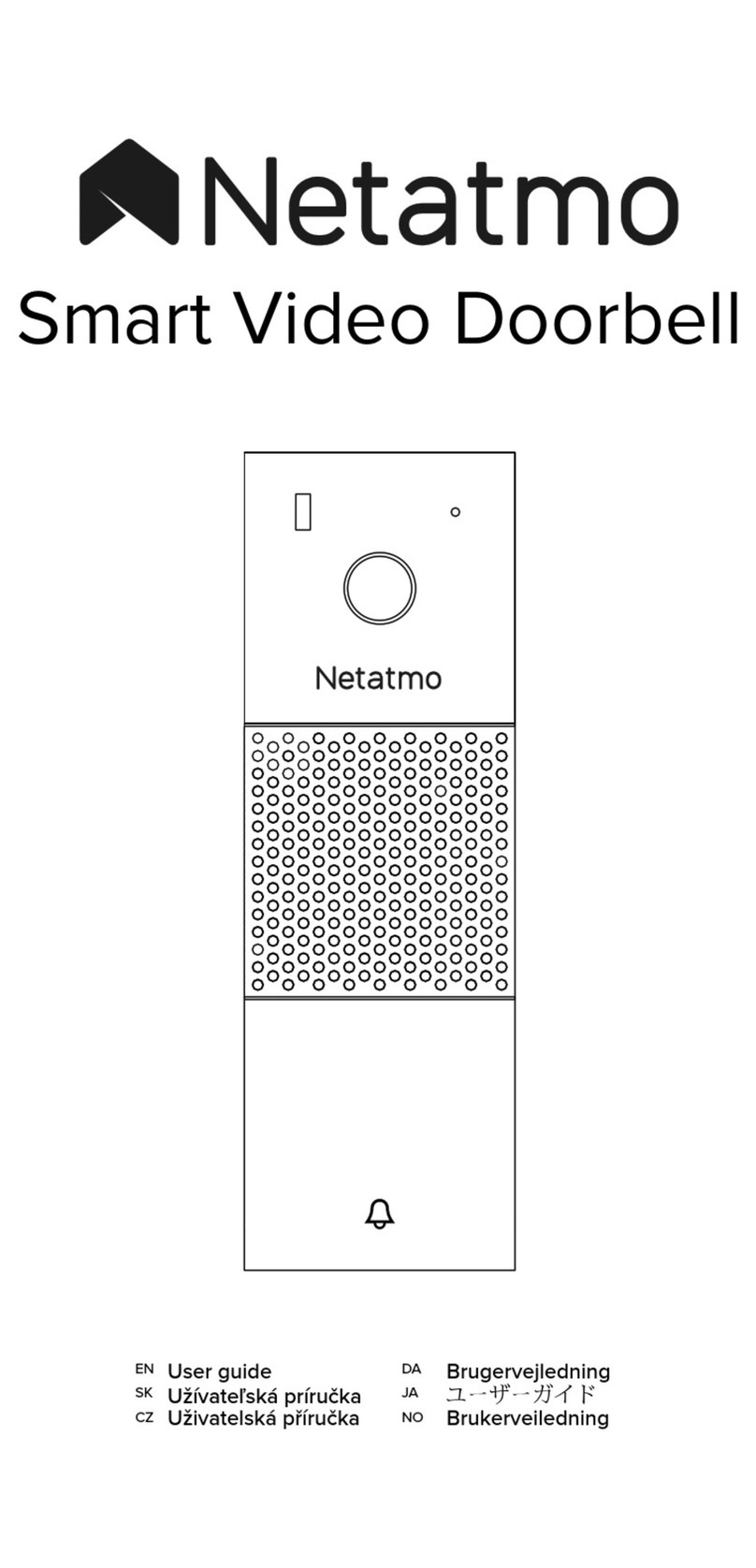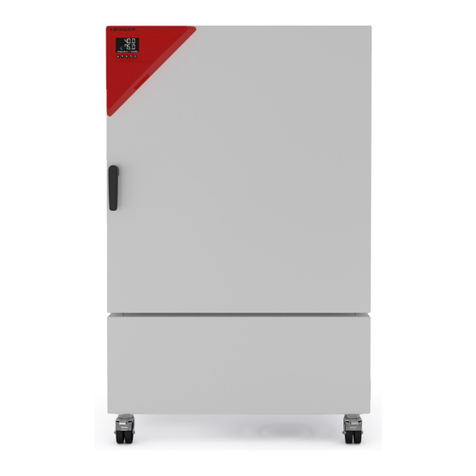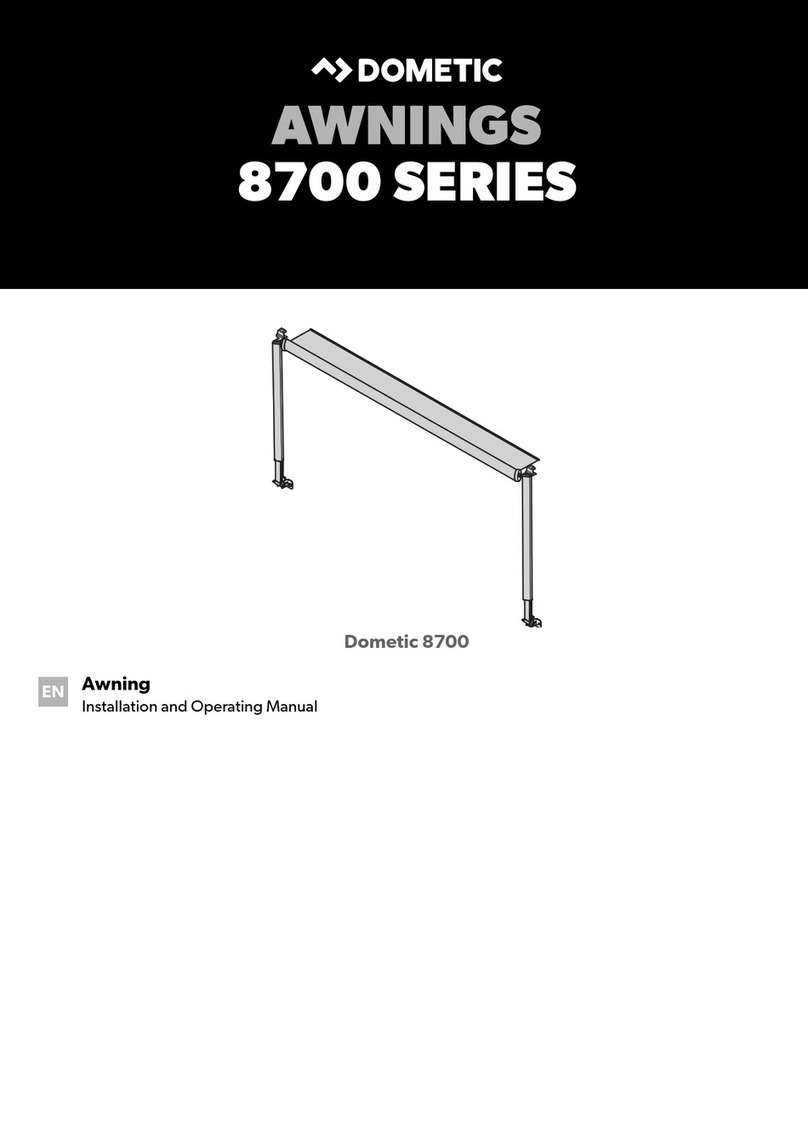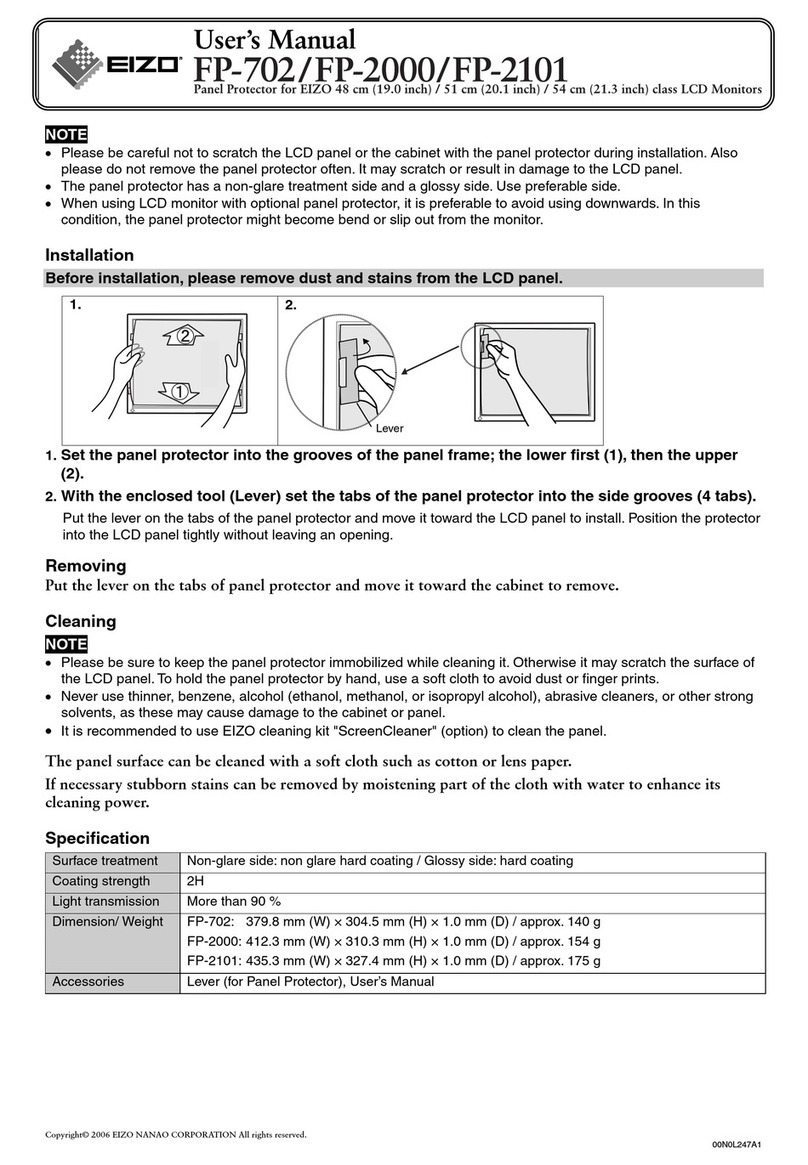Sine Systems DAI-2 Operating instructions

Nashville,Tennessee • 615-228-3500
www.sinesystems.com
Dial-up Audio Interface
– INSTALLATION AND OPERATION –
DAI-2 firmware version 2.00
DAI-2 hardware revision 1
DAI-RP hardware revision 1
Model DAI-2

Table of Contents
Section I – Safety Information Page
1.1 Safety Information 1.1
Section 2 – FCC Information
2.1 Part 68 Compliance 2.1
Section 3 – Installation
3.1 System Includes 3.1
3.2 Installing the System 3.1
Mechanical Installation 3.2
DAI-2 Relay Panel Interconnect 3.2
Telephone Line Connection 3.2
Audio I/O Connection 3.3
Logic-Level Input Connections 3.3
Manual Connect Input 3.4
Control Relay I/O Connections 3.4
Power Supply 3.4
3.3 Telephone Interface 3.5
Cellular Telephone with an RJ-11 Adapter 3.5
Fixed Location Cellular Telephones 3.5
Rural Radiotelephones or Ranch Telephones 3.5
3.4 Use with RPU Equipment 3.6
3.5 RF Interference 3.6
3.6 Lightning Protection Tips 3.7
Proper Ground System 3.7
Telephone Line Protection 3.7
Section 4 – Operation
4.1 Overview 4.1
4.2 Operation from a Remote Telephone 4.1
Going Online with the DAI-2 4.1
Issuing Commands 4.1
Shift Key Commands 4.1
Going Offline with the DAI-2 4.1
4.3 Operaton from a Local Telephone 4.2
Connect Button 4.2
Manual Connection with Telephone Lines 4.2
Manual Connection without Telephone Lines 4.3
4.4 Operation on a Shared Telephone Line 4.4
Transfer from a Dial-up Remote Control 4.4
Control via VHF or Microwave RPU 4.5
4.5 Command Sets 4.5
Command Set 0 -- User Defined 4.5
Command Set 1 -- Soundbite Recorder 4.6
Command Set 2 -- Remote Broadcaster 4.7
Command Set 3 -- Emergency Broadcaster 4.8
DAI-2 Table of Contents i

Section 5 – Programming
5.1 Overview 5.1
5.2 Introduction to the Command Matrix 5.1
5.3 Programming Mode 5.2
Programming Mode Basics 5.2
Read from Memory 5.3
Write to Memory 5.4
Telephone Numbers 5.4
Alarm System 5.5
Programming Suggestions 5.5
Programming Example 5.6
5.4 Command Matrix 5.7
Command Matrix Settings 5.8
5.5 System Profile Settings 5.9
Command Set 5.9
Safeguard Timer 5.9
Security Codes 5.9
Logic-Level Inputs 5.10
Telephone Numbers 5.11
Automatic Level Control (ALC) 5.11
Ring Number 5.12
DTMF Hold Time 5.13
Identification Tones 5.13
Slate Tone 5.14
Delay Unit 5.14
Leased Line Mode 5.14
5.6 Memory Address List 5.15
5.7 Factory Command Matrix Programming 5.24
Section 6 – Troubleshooting and Repair
6.1 Common Problems and Possible Solutions 6.1
6.2 Factory Service Policy 6.2
6.3 Repair Procedure 6.3
Section 7 – Specifications
7.1 Electrical & Mechanical Specifications 7.1
7.2 Flat Cable Pinout 7.1
7.3 Schematic Diagrams 7.2
7.4 Component Layouts 7.3
7.5 Parts List 7.5
DAI-2 Table of Contents ii

Section 1 — Safety Information
!
The DAI-2 Dial-up Audio Interface should be installed only by qualified technical personnel. An attempt to
install this device by a person who is not technically qualified could result in a hazardous condition to the
installer or other personnel, and/or damage to the DAI-2 or other equipment. Please ensure that proper
safety precautions have been made before installing this device.
The DAI-2 Dial-up Audio Interface is registered with the Federal Communications Commission and certified to meet
specific safety requirements. It is extremely important that the DAI-2 not be modified in any way. Modification of this
equipment will void the FCC certification, void the warranty, and perhaps pose a hazard to the user of this equipment
or to maintenance personnel of your local telephone company. Service of the DAI-2 Dial-up Audio Interface should
be performed only by qualified technical personnel who are familiar with the implications of FCC Part 68 registration.
The DAI-2 Dial-up Audio Interface is designed for indoor use in a dry location. Installation and operation in other
locations could be hazardous.
Extreme caution should be used if the DAI-2 Dial-up Audio Interface case is opened without first being
disconnected from the telephone line and the DAI-2/RP Relay Panel. High voltages may be present on
telephone lines, and although the DAI-2 is powered by 12 volts AC from a "wall plug" transformer, failure
of this transformer could cause dangerous and potentially lethal voltages to become present. Only the
supplied transformer should be used.
Depending on the installation, substantial voltages may be connected the DAI-2 relay panel. If this is the case, use
extreme care when working in the vicinity of the DAI-2 and disconnect all sources of high voltage before contacting it.
The DAI-2 contains self-resetting "fuses" that protect it from excessive current. If these are replaced, the
replacement devices should be of the same type and rating.
The DAI-2, as any electronic device, can fail in unexpected ways and without warning. Do not use the DAI-2 in
applications where a life-threatening condition could result if it were to fail.
DAI-2 Safety Information page 1. 1

Section 2 — FCC Information
2.1 Part 68 Compliance
The DAI-2 complies with Part 68 of the FCC rules. On the rear panel of the DAI-2 is a label that contains, among other
information, the FCC registration number and ringer equivalence number (REN) for this equipment. If requested, this
information must be provided to the telephone company.
The REN is used to determine the quantity of devices that may be connected to the telephone line. Excessive RENs
on the telephone line may result in devices not ringing in response to an incoming call. In most areas, the sum of the
RENs should not exceed 5.0. Contact the local telephone company to determine the maximum REN for the calling
area.
The DAI-2 is designed for use with standard modular (RJ11C) telephone jacks.
The telephone company may make changes in its facilities, equipment, operations, or procedures that could affect
the operation of the DAI-2. If this happens, the telephone company will provide advance notice in order for you to
make the necessary modifications to maintain uninterrupted service.
If the DAI-2 causes harm to the telephone network, the telephone company will notify you in advance of service
disconnection. But if advance notice isn't practical, the telephone company will notify the customer as soon as
possible. Also, you will be advised of your right to file a complaint with the FCC if you believe it is necessary.
Please contact Sine Systems, Inc., for repair and/or warranty information if you suspect that the DAI-2 has
malfunctioned. If a defective device is causing harm to the telephone network, the telephone company may request
you remove that device from the network until the problem is resolved.
The DAI-2 cannot be used on public coin service lines provided by the telephone company. Connection to Party Line
Service is subject to state tariffs. Contact your state public utility commission, public service commission, or
corporation commission for information.
The DAI-2 is registered with the Federal Communications Commission and is certified to meet specific safety
requirements. It is extremely important that the DAI-2 not be modified in any way. Modification of this equipment will
void the FCC certification, void the warranty, and perhaps pose a hazard to the user of this equipment or to
maintenance personnel of your local telephone company.
Service should be performed only by qualified technical personnel who are familiar with the implications of FCC Part
68 registration. Extreme caution should be used if the DAI-2 case is opened while still connected to the telephone
line. High voltages may be present on telephone lines.
DAI-2 FCC Information page 2. 1

Section 3 — Installation
!
The DAI-2 Dial-up Audio Interface should be installed only by qualified technical personnel. An attempt to
install this device by a person who is not technically qualified could result in a hazardous condition to the
installer or other personnel, and/or damage to the DAI-2 or other equipment. Broadcast equipment can
operate at voltages that are potentially lethal. Please ensure that proper safety precautions have been
made before installing this device.
3.1 System Includes
The DAI-2 Dial-up Audio Interface package contains these items:
•Dial-up Audio Interface model DAI-2
•rack mounted chassis and relay panel
•ribbon cable with two connectors
•12 VDC wall plug supply
•modular telephone cable
•operation manual
All systems are fully tested before leaving the factory but damage may occur in transport. When the DAI-2 is
unpacked, it should be inspected for obvious signs of mechanical damage or loose parts. Loose parts should be
tightened before installation. If damage is found, save the packing material and report it to the shipping company and
the dealer from which it was purchased. Do not install the system.
3.2 Installing the System
The DAI-2 is easy to install if you are careful, patient and alert. Installation is broken down into a series of logical
steps but you should have some previous engineering experience in a broadcast environment before attempting to
install the DAI-2. Access to the building does not necessarily qualify you as an engineer. We cannot protect you
from yourself, but we want to make this point very clearly: if you are unfamiliar with this type of equipment, please
contact a properly qualified engineer to handle installation and setup of this system.
DAI-2 Installation page 3. 1

3.2.1 Mechanical Installation
The DAI-2 is designed to be mounted in a standard 19 inch equipment rack. The system generates little heat and can
be mounted in just about any convenient location. The DAI-2 should be mounted at a location which is convenient to
the equipment that will be connected to it.
Figure 3.1; DAI-2 Dial-up Audio Interface
3.2.2 DAI-2 Relay Panel Interconnect
The DAI-2 should be connected to its relay panel with the 20 conductor flat (ribbon) cable. This cable is supplied with
the system and is terminated with an appropriate connector at each end. One end of the flat cable connects to the
rear of the DAI-2 control unit at the connector labeled “Relay Panel” (see Figure 3.2). This connector is keyed to fit in
one direction and will be held secure by latches when fully inserted.
Figure 3.2; Rear panel connectors
On the relay panel, the tab on the flat cable connector should line up with the connector outline around J11 on the
relay panel (see Figure 3.3). This connector has no outer shell and is not keyed so make sure that the connector is
properly oriented and aligned with all pins before applying pressure.
3.2.3 Telephone Line Connection
The DAI-2 should be connected to a standard (POTS) telephone line with the modular (RJ11C) jack on the rear panel
labeled "Line". A telephone cable is supplied with the DAI-2 for this purpose.
DAI-2 Installation page 3. 2

3.2.4 Audio I/O Connections
The DAI-2 has one audio input and one audio output. The audio input feeds audio to the telephone line and the audio
output provides audio from the telephone line. The DAI-2 control circuits allow only one audio port to be active at a
time--the DAI-2 is not a telephone hybrid device. Both the input and output are balanced, high level audio ports.
The audio input and output connections are made through screw terminals on the relay panel. The terminals are
located on a connector J9 to the left of the flat cable connector J11 as shown in figure 3.3.
Figure 3.3; Relay Panel power, audio and logic connections
The DAI-2 audio output can drive a balanced high impedance or 600 ohm load at up to about +4dBm. If the DAI-2
audio output is used to drive an unbalanced load, use either output lead and ground. Do not connect either side of
the DAI-2 audio output to ground for an extended period of time or damage to the DAI-2 could result.
The audio output level of the DAI-2 is adjustable through programming. This is covered in the programming section of
this manual. The DAI-2 is factory programmed to a program level of about +2 to +4 dBm with a slight amount of peak
clipping. Higher output level settings will result in higher output level and more clipping while lower settings will result
in lower output levels and little or no clipping.
The DAI-2 has an internal automatic level control (ALC) that attempts to keep both input and output levels consistent.
The behavior of the ALC is programmable. The ALC can also be enabled or disabled on a key-by-key basis.
The DAI-2 audio input is a high impedance, balanced input. It can be driven by either a balanced or unbalanced
source. For unbalanced audio sources, connect the source leads to the IN+ and IN- terminals. It does not matter
which lead is connected to which input. Unlike the audio output, there are no restrictions on grounding the audio input
connections. The DAI-2 is designed to automatically adjust for input levels within the range of -10 dBv to +4 dBv.
3.2.5 Logic-Level Input Connections
The DAI-2 has four programmable logic-level inputs. All logic-level inputs can be driven by a +5 VDC logic signal, a
contact closure, or a ground referenced open-collector. Logic is active low and internal pull-up resistors are present.
In other words, when using an open-collector or contact closure, a pull down to ground activates the appropriate
function. The logic-level inputs can be held at ground indefinitely. They will trigger one time on the falling edge and
will not trigger again until the input signal goes high and falls again.
External logic gates should have the same ground reference as the DAI-2. Unused logic-level inputs should be left
unconnected. The time required for a logic-level input change to activate a function is controlled by user-
programming and is discussed in the programming section of this manual.
The logic-level inputs are labeled IN 1 through IN 4 on J10 of the relay panel.
DAI-2 Installation page 3. 3

3.2.6 Manual Connect Input
There is one single-purpose logic-level input that is used to force the DAI-2 to go off hook. Like the other logic-level
inputs, this one can also be driven by a +5 VDC logic signal, a contact closure, or a ground referenced open-
collector. Logic is active low and an internal pull-up resistors is present. The manual connect input is labeled CON on
J10 of the relay panel.
3.2.7 Control Relay I/O Connections
The DAI-2 has eight control relays built in to the relay panel. Seven of these relays are DPDT and one is 4PDT--
typically used to switch stereo audio. All contacts, normally-open (NO), normally-closed (NC) and common (COM)
are brought out to pluggable screw terminal connectors. The seperate relay poles are designated A and B. Relay 1
uses two relays to give it a total of four poles. The two relays are identified as 1A and 1B.
Figure 3.4; DAI-2 Control relay I/O connections
The relay “control” wiring is pre-wired to the DAI-2 control unit via the flat cable, however, the system is fully
programmable and any combination of relays can be engaged through system programming.
The control relay contacts are rated to withstand fairly high voltages but we do not recommend routing high voltage
through the DAI-2. See the specfications section of the manual for relay contact ratings but keep in mind that the
DAI-2 is designed to route audio signals. Low voltage, logic-level switching is okay where appropriate.
Sample wiring diagrams are shown later in this section.
3.2.8 Power Supply
One or both of the DAI-2 GND terminals must be connected to the station ground or other qood quality
earth-ground. The DAI-2 contains an internal protection circuit that diverts an abnormally high voltage on
the telephone line to the DAI-2 ground connection. It is very important that the DAI-2 ground connection be
connected to a good quality earth-ground for this protection to work. Failure to do this could result in a
painful or lethal shock to anyone in electrical contact with the DAI-2 if a high voltage were present on the
telephone line from lightning, etc.
DAI-2 Installation page 3. 4

Power to operate the DAI-2 is supplied by a 12 volt DC wall-plug transformer that is included with the DAI-2. This
transformer is designed for 120 volts AC at 50-60 Hz and is rated at 500 milliamps. The leads of this transformer
should be stripped and tinned and connected to the appropriate screw terminal connectors on J9 of the relay panel.
The positive lead (usually denoted by a white stripe) connects to the +12V terminal and the negative lead connects to
GND on the relay panel. (See figure 3.3) Power supply polarity should be verified before the connections are made to
avoid damage to the DAI-2.
3.3 Telephone Interface
The RFC-1 is designed to be connected to an ordinary (POTS) telephone line. In some cases a telephone line is
either not available or is prohibitively expensive. There are several alternatives to a regular telephone line that are
compatible with the RFC-1.
3.3.1 Cellular Telephone with an RJ-11 Adapter
It is possible to connect a cellular telephone to the DAI-2 in place of a telephone line. Some cell phone manufacturers
offer devices that provide a cellular telephone with a standard RJ-11 jack. These devices emulate a standard
telephone line including dial tone, ring voltage and battery. Additionally, the cell phone will usually need to be
outfitted with an external antenna and a constant power supply. Several manufacturers offer these items as part of
their product line but product lines change rapidly. The best approach is to discuss your needs with your supplier to
find a solution that will work.
Most of these RJ-11 adapters generate a square-wave ring signal on an incoming call instead of the sine-wave ring
voltage that is found on a normal telephone line. The DAI-2 has a firmware adjustment that will enable it to recognize
the non-standard ring signal. The Programming section of the DAI-2 documentation provides details on making this
adjustment.
3.3.2 Fixed Location Cellular Telephones
An alternative to using a mobile cell phone with an RJ-11 adapter is to use a cell phone designed specifically for fixed
locations. These phones usually include an RJ-11 connector for outboard equipment and provide a cleaner solution
than the adapter approach. They also tend to be more expensive but they include some items that are extra in the
mobile cell phone approach. Telular, Inc. is a manufacturer of fixed location cell phones. They can be reached at
(800) 229-2326 or http://www.telular.com.
3.3.3 Rural Radiotelephones or Ranch Telephones
Rural radiotelephone systems, or "ranch phones”, are systems that use a full duplex VHF or UHF radio circuit to
extend a telephone line. Two small transceivers are used in this system. One end is connected to a regular
telephone line, the other end has an RJ-11 jack that emulates a regular telephone line. Rural telephones have a
range of roughly 1 to 10 miles depending on terrain. The transmitter power levels are usually in the range of 1 to 10
watts. Because they contain transmitters, rural telephones must be licensed. Channels are scarce in the more
populated areas of the country but are usually available in the areas where rural telephones are most often needed.
Rural radiotelephones usually cost several thousand dollars for a typical system but there is no recurring cost for
service once installed. DX Radio Systems is a provider of radiotelephones. They can be reached at (800) 447-6937
or http://www.tpl-dxrs.com.
DAI-2 Installation page 3. 5

3.4 Use with RPU Equipment
It is quite feasible to use the DAI-2 with communications links other than telephone lines. For example, the control
and switching capabilities of the DAI-2 often can be useful during remotes using a UHF Remote Pickup Unit (RPU).
The audio output of the RPU receiver should be adjusted to a level between -30 dBm and 0 dBm and then fed to the
LINE jack on the DAI-2. Bring the DAI-2 online the the manual connect control--either from the front panel
pushbutton or the logic-level input.
It is easy to construct an extremely versatile system that allows two communications links to be used with the DAI-2.
Either a telephone line or the output of the RPU receiver can be connected to the DAI-2 using the squelch relay in an
RPU receiver to control a DPDT relay as shown in Figure 3.5.
Figure 3.5; Using both and RPU and telephone line with the DAI-2
The DAI-2 contains an internal 4.5 kHz low-pass filter. This will not limit the bandwidth of audio coming from the
telephone line but it will restrict bandwidth of the audio coming from the RPU. This is usually not a problem for voice
broadcasts, but it may be an issue for music broadcasts.
DTMF tones are used to control the DAI-2 when using a telephone line. DTMF tones can be generated by simple tone-
dialers but these devices may require modification to obtain the necessary audio connection.
3.5 RF Interference
The DAI-2 is typically a studio device so there have been few reported RF problems with this device. However, since
it can be installed at a transmitter site, a few suggestions on preventing RF interference are in order. The DAI-2 is
designed with bypass caps and suitable RF protection on the telephone line for most installations. However, extreme
conditions exist that require additional external filtering to obtain reliable operation. Extreme conditions are rare but
these problems can be overcome by a combination of one or more of the following remedies:
•Install an RF filter before the "Line" jack near the DAI-2
•Loop the ribbon cable several times through a ferrite core at each end
Telephone line RF filters can be obtained through a wholesale distributor or telephone products. Suttle Apparatus is
one manufacturer of these devices. They can be reached at (800) 852-8662 or http://www.suttleonline.com. Be sure
to get an RF filter and not simply a spike protector.
DAI-2 Installation page 3. 6

3.6 Lightning Protection Tips
!
Damage to the DAI-2 by lightning is not covered under warranty. See the complete warranty for more
information.
In most installations the DAI-2 is connected to both a telephone line and other broadcast equipment. Any equipment
in this situation is subject to severe abuse from lightning. In some installations this happens frequently. Lightning
can enter through the phone line, mistreat the DAI-2 and exit to the station ground system. It can also hit the tower,
elevate the entire ground system above ground by several kilovolts and exit through DAI-2 to ground. This is called a
"ground surge." In other words, the telephone line can hit the DAI-2 or the DAI-2 can hit the telephone line. The same
thing can happen with the power line.
3.6.1 Proper Ground System
The first step in any protection scheme is to install and maintain a high quality ground system. This will serve two
purposes. First, the intensity of the ground surge will be lowered because of the lower resistance to earth ground and
second, if everything is tied together with low impedance conductors, all equipment will stay closer to the same
electrical potential when the system ground takes a hit. All protection devices, equipment racks and transmitters
should be tied together with low impedance conductors, preferably copper strap, as short and as free from bends as
possible. Do not depend on metal conduit for ground connections. A properly designed and installed ground system
will pay for itself many times over in the damage it prevents.
3.6.2 Telephone Line Protection
Be sure your local telephone company has installed gas surge arrestors on your incoming telephone lines. Old
installations may contain carbon protectors which tend to provide less reliable protection. Be sure the ground
connection used by the telephone company is an integral part of your station ground system. Sometimes the
telephone company will use a nearby cold water pipe, metal conduit, or isolated ground rod for their ground and this
may be, electrically speaking, quite a distance from your station ground system. Do not disconnect their ground
connection, just add a supplemental conductor from their ground point to the station ground.
We highly recommend that you purchase and install your own telephone line surge protector in addition to the one
installed by the telephone company. Place this between the incoming telephone line and the DAI-2. These spike
protectors are designed to pick up a ground connection through the ground prong on a standard AC outlet so be sure
this is in fact connected to your station ground by the shortest possible means. For best result, install a "dummy" AC
outlet with no AC connections but with a short jumper from the ground terminal on the outlet the metal rack in which
the DAI-2 relay panel is mounted. Most protectors have internal, non-replaceable fuses which will blow during a
heavy surge. If this happens, replace the protector. Do not attempt to repair it.
DAI-2 Installation page 3. 7

3.7 Relay Panel Wiring Diagrams
3.7.1 Soundbite Recorder
DAI-2 Installation page 3. 8

3.7.2 Remote Broadcaster
DAI-2 Installation page 3. 9

3.7.3 Emergency Broadcaster
DAI-2 Installation page 3. 10

Section 4 — Operation
4.1 Overview
Since the DAI-2 is controlled by DTMF tones, operating the unit always begins by calling the number where it is
located. The DAI-2 must be connected through a telephone line, even when bench testing, because (normally) the
unit does not normally provide the necessary operating voltage to the telephone. No special phone line or equipment
is required but the controlling telephone must be able to produce DTMF tones. These are the tones generated by the
buttons on a TouchTone® telephone.
The DAI-2 responds to DTMF according to user adjustable programming. Every key on the telephone keypad except
the ❊key can be programmed to change the state of the output relays or to change the audio switching in the DAI-2.
The ❊key is used as a function key to change system programming, etc.
4.2 Operation from a Remote Telephone
4.2.1 Going Online with the DAI-2
The DAI-2 will answer the line after two rings (under factory programming) and signal that it has seized the line with
one long tone. Enter the main security code using the telephone keypad. The main security code is factory
programmed to "12345678". After the security code is correctly entered the DAI-2 responds with two short tones. If
the security code is entered incorrectly, the unit will drop the line immediately.
4.2.2 Issuing Commands
The DAI-2 is controlled using one and two digit commands from the keypad of a telephone. The digit keys 0-9 and the
# key cause the unit to perform actions as programmed in user programming with the press of a single key. How the
DAI-2 responds to key presses is determined by a table stored in memory. You indicate how you want the DAI-2 to
respond to each available key by placing specific values in the table. This table effectively forms the command set
for the DAI-2. Command sets are discussed later in this section.
4.2.3 Shift Key Commands
In the DAI-2, the ❊ key acts as a shift key which, in conjunction with a second key, causes the unit to perform a
specific pre-programmed action. These actions are controlled by the DAI-2 and are not programmable by the user.
Shift Key DAI Function
❊7Enter programming read mode
❊8Enter programming write mode
❊99 Hang up
❊0Read firmware version
❊❊ Shift/Unshift (shift key acts like a toggle)
❊#, 1-6 Reserved for future use
4.2.4 Going Offline with the DAI-2
To end a session with the DAI-2 simply hang up the telephone at any time. The DAI-2 should hang up automatically.
To force the DAI-2 to hang up, press ❊99 (two nines). The unit will respond with a series of ten short warning tones
and, at the end of these tones, it will drop the line. Pressing any key while the unit is sending the warning tones will
terminate the hang up sequence and keep the unit in operating mode.
DAI-2 Operation page 4. 1

4.3 Operation from a Local Telephone
While this is not the normal method of operation, it is possible to connect to the DAI-2 from a local telephone located
near the DAI-2. A local connection is typically used only for initial programming or testing. A local connection
bypasses the security codes. This can be particularly helpful if you change one or more codes are forget them.
4.3.1 Connect Button
The following procedure uses the Connect button located on the rear panel of the DAI-2. This button works as either
a momentary or maintained contact depending on how you use it. If the button is pressed briefly and released, the
DAI-2 will connect to the telephone line and wait for a non-alterable attention signal of ❊❊❊❊. After the attention
signal is given, the unit will enter the operating mode and remain there until you hang up the telephone.
Figure 4.1; Rear panel (location of Connect button)
If the button is pressed and held, the DAI-2 will wait for the attention signal and enter the operating mode as above. It
will remain in the operating mode as long as the Manual Connect button is held. The connection will be broken when
the button is released for three seconds.
The Manual Connect button is disabled when the DAI-2 is online with a telephone call.
When a connection is made using the Connect button, the DAI-2 does not enforce the programming security code for
10 seconds. This should give you enough time to enter the programming mode in the event that you need to
reprogram any security codes that have been lost. If the DAI-2 is still in operating mode after 10 seconds, it will
enforce the programming security code as usual.
4.3.2 Manual Connection with Telephone Lines
The easiest way to establish a manual connection to the DAI-2 is to use two telephone lines. Designate one line as
the calling line and the other as the receiving line. Connect the DAI-2 to the receiving line and call it from the calling
line. Press the Connect button when you hear the line ringing. This will force the DAI-2 to seize the line and place it in
the operating mode as if the security codes were successfully entered. The DAI-2 will confirm that it is in the
operating mode with two short tones to signal that it is waiting for commands.
It is important to press the button before the DAI-2 answers the line. If the DAI-2 answers first, you will hear one long
tone instead of two short beeps. The long tone indicates that the DAI-2 is expecting a security code.
Operate the unit as you would normally, making any changes you need to the system programming. When you are
finished, hang up the originating telephone. The DAI-2 will hang up automatically.
If you have only one telephone line but you have a cellular telephone, substitute the cell phone for the calling line and
call the DAI-2 as described previously.
DAI-2 Operation page 4. 2

4.3.3 Manual Connection without Telephone Lines
!
This procedure requires that the cover of the DAI-2 be removed. While the voltages inside the unit should
not exceed about 12-15 VDC, even low voltages can be potentially lethal under certain conditions. This
procedure should only be performed by qualified technical personnel.
The procedure requires you to handle the DAI-2 circuit board. This board contains components that are
sensitive to static electricity. Use proper precautions when handling the circuit board.
This procedure places a 12 VDC voltage source on the modular connector J1 to power a telephone set
directly. It is important that the DAI-2 not be connected to a telephone line with the jumpers in this
position.
This method is similar to the one described in section 4.3.2 except that it does not require any telephone lines or a
cellular phone. The only hardware necessary is a telephone with a standard modular plug and two shorting jumpers or
clip leads.
•Unplug the supply transformer from the wall outlet and disconnect the telephone line and ribbon
cable connectors from the DAI-2 before starting this procedure.
•Remove the rear panel of the DAI-2 case by removing the two securing screws. Carefully slide the
circuit board out of the case and place it, component side up, on a non-metallic surface.
•Arrange three jumpers as shown in Figure 4.2 to enable the telephone voltage. If you do not have
the extra jumpers, clip leads may be used but make sure that they do not short any components.
Figure 4.2; Telephone voltage jumpers JP1
•Connect the telephone to the telephone line jack and carefully attach the ribbon cable so that the
unit has power. The power LED should illuminate.
DAI-2 Operation page 4. 3

•Lift the telephone off hook and press (and release) the Connect button. A relay will click and the
DAI-2 will connect to the telephone. Enter the attention code ❊❊❊❊ on the telephone keypad
activate the DAI-2. You will hear two short beeps to confirm that you are connected.
•Operate the DAI-2 as you would normally, making any changes you need to the system
programming.
•This step is extremely important! When you are finished, disconnect the ribbon and telephone
cables. Replace the jumper at JP1 to its original position for normal operation as shown in Figure
4.2. Arrows on the circuit board indicate the correct position for the jumper. Failure to install the
jumper properly may cause damage to the DAI-2 or other equipment.
•Slide the circuit board back into the case, replace the rear panel and secure it with the two screws
removed at the beginning of this procedure.
4.4 Operation on a Shared Telephone Line
The DAI-2 can share a telephone line with other automated equipment. To avoid complications and unexpected
interactions, it is not usually desirable to have more than one device seize the telephone line. However, with proper
planning a functional solution can be reached.
4.4.1 Transfer from a Dial-up Remote Control
In the scenario, the DAI-2 and a dial-up remote control (such as the Sine Systems RFC-1/B) share a telephone line.
Although the DAI-2 is normally installed at the studio, situations do exist where the DAI-2 is installed at a transmitter
site. The remote control will probably be used more often than the DAI-2 so it will be given priority. When it is not the
desired target device, it can be used to pass the call over to the DAI-2.
Make sure that the remote control is programmed to answer the telephone before the DAI-2. The factory default
setting of both the DAI-2 and the RFC-1/B is to answer on the second ring. To eliminate this conflict, program the
DAI-2 to answer on the fourth ring. Details of changing the ring number to answer are given in the programming
section of this manual. When the ring number is adjusted correctly, the remote control should always answer the
line first. Connect the telephone line to both devices.
Figure 4.3; Relay panel connections
On the DAI-2 relay panel there is a screw terminal connection labeled “CON”. This terminal is in parallel with the
manual “Connect” switch located on the rear panel of the DAI-2. Pulling this contact to ground is exactly like pressing
the button. Connect the CON and GND terminals to an unused set of normally open relay contacts on the remote
control relay panel (Sine Systems model RP-8). When the appropriate control relay is activated, the CON terminal will
be pulled to ground. In this example we will use the channel 7 On/Raise relay of the RFC-1/B.
DAI-2 Operation page 4. 4

Make sure that both devices are powered and establish a normal connection to your remote control. Issue the
security codes and commands necessary to select and control channel 7. (In the case of the RFC-1/B, enter 07 to
select channel 7 and enter the control security code 66.) Issue the command to activate the On/Raise control relay
(# on the RFC-1/B). This command will activate the DAI-2 by bridging the Connect switch as described above. Both
devices are now connected to the telephone line--but the DAI-2 is not yet active.
Enter the hangup command to the remote control (99 for the RFC-1/B) so the remote control releases the line. Enter
❊❊❊❊ to activate the DAI-2. When the DAI-2 activates this way it will not require security code for access.
When the DAI-2 is waiting for a security code it will not recongize a telephone hang-up (if it did, it would release the
line when the remote control drops off). If the remote control hang-up is causing the DAI-2 to release the line,
increase the length of the security code timer. During a transfer, do not enter the DAI-2 activation command ❊❊❊❊
until after the remote control disconnects from the line.
4.4.2 Control via VHF or microwave RPU
A variation of the “Transfer from Remote Control” connection described above can be used to connect to and control
the DAI-2 using an RPU. This connection can be used instead of (or in addition to) a telephone line. Connect the
squelch relay contacts to the CON and GND screw terminals described in the previous section. When the RPU is
keyed on, the squelch relay closure will bring the DAI-2 online. Enter ❊❊❊❊ to activate the DAI-2. When the DAI-2
activates it will not require security code for access. The squelch relay will hold the DAI-2 online as long as it is
engaged. When the squelch relay releases, the DAI-2 will disconnect.
Audio signals from the RPU must be routed to the input of the DAI-2. A sample schematic is provided in the
Installation section of this manual. The DAI-2 will ignore chatter on the squelch relay as long as contact is not lost
for more than one full second. You must have an external means of generating DTMF tones to control the DAI-2.
4.5 Command Sets
The DAI-2 stores four command sets in its non-volatile memory. A command set defines how the unit will respond
when telephone keys are pressed and when logic level inputs are activated. Three of these command sets are
permanent and cannot be changed--the forth is fully user programmable. While four commands sets are stored in
memory only one command set can be active at a time. The active command set is selected by changing the
programming in system profile at address 358--Active Command Set.
Command sets tell the DAI-2 how to respond when: a key is pressed; a logic level input is detected; or the system is
reset. Each key and logic level input can set different conditions except the ❊key which used by the system and is
not programmable. System responses can include: opening, closing or momentarily closing relay contacts;
switching audio either into or out of the DAI-2; generating an audible slate tone for cuing; and triggering a series of
telephone calls to warn of an alarm condition.
4.5.1 Command Set 0 -- User Defined
Command set 0 is entirely user programmable. From the factory, command set 0 contains the same settings as
command set 3 for emergency broadcast operation. Instructions for reprogramming are in the next section of this
manual. The three factory programmed command sets provide good examples of the variety of uses and
programming options for the DAI-2.
DAI-2 Operation page 4. 5
Table of contents
Popular Accessories manuals by other brands
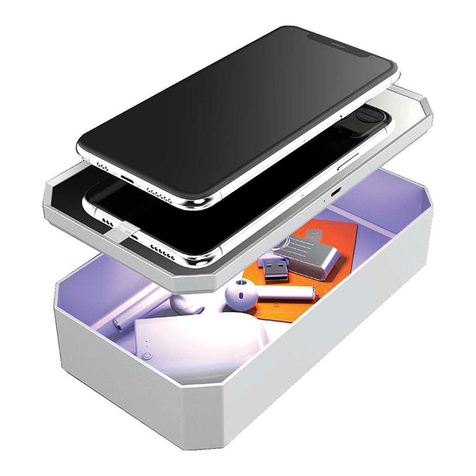
FirstHealth
FirstHealth FH7029 instruction manual

Modern Portable
Modern Portable jHub Pebble Guide
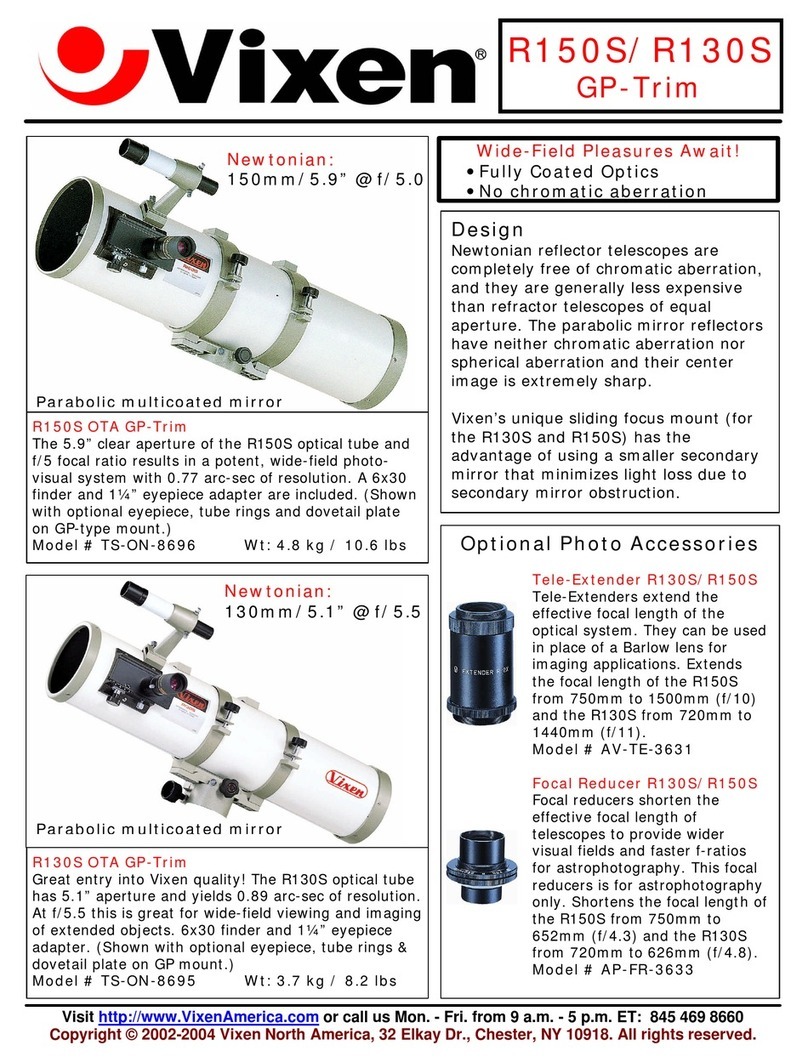
Vixen
Vixen R130S Specifications

Steren
Steren smart home SHOME-100 instruction manual
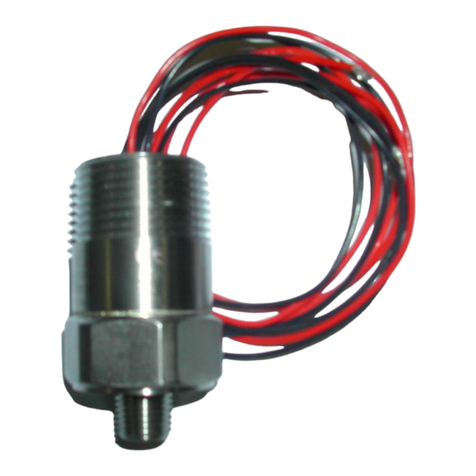
PCB Piezotronics
PCB Piezotronics IMI Sensors CS640B92 Installation and operating manual
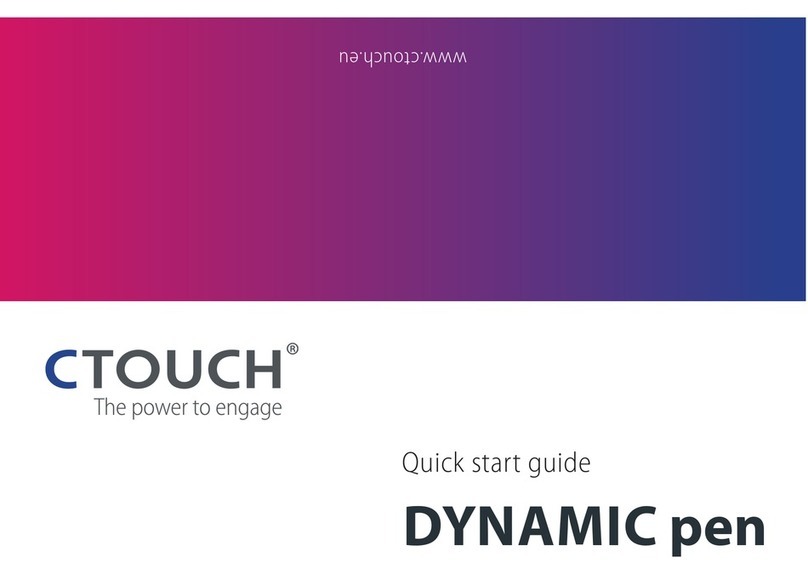
Ctouch
Ctouch DYNAMIC PEN quick start guide
